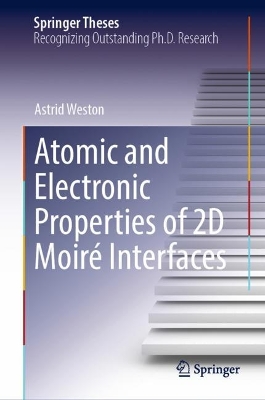Springer Theses
1 total work
This thesis provides the first atomic length-scale observation of the structural transformation (referred to as lattice reconstruction) that occurs in moiré superlattices of twisted bilayer transition metal dichalcogenides (TMDs) at low (θ 2˚) twist angles. Such information is essential for the fundamental understanding of how manipulating the rotational twist-angle between two adjacent 2-dimensional crystals subsequently affects their optical and electrical properties.
Studies using Scanning transmission electron microscopy (STEM), a powerful tool for atomic-scale imaging, were limited due to the complexity of the (atomically-thin) sample fabrication requirements. This work developed a unique way to selectively cut and re-stack monolayers of TMDs with a controlled rotational twist angle which could then be easily suspended on a TEM grid to meet the needs of the atomically thin sample requirements. The fabrication technique enabled the study of the two common stacking-polytypes including 3R and 2H (using MoS2 and WS2 as the example) as well as their structural evolution with decreasing twist-angle.
Atomic-scale studies were followed by a comprehensive investigation of their electronic properties using scanning probe microscopy and electrical transport measurements of the artificially-engineered structures. The electronic structure of two common stacking-polytypes (3R and 2H) were strikingly different, as revealed by conductive atomic force microscopy. Further studies focused on the 3R-stacking polytype to reveal room-temperature out-of-plane ferroelectricity using tools such as kelvin probe force microscopy, scanning electron microscopy and electrical transport measurements. This work highlights that the unique intrinsic properties of TMDs (i.e. semiconductors with strongly light-matter interaction) combined with the additional twisted degree-of-freedom has great potential to create atomically thin transistors/LEDs with built-in memory storage functions and will further aid in the development of the next generation of optoelectronics.
